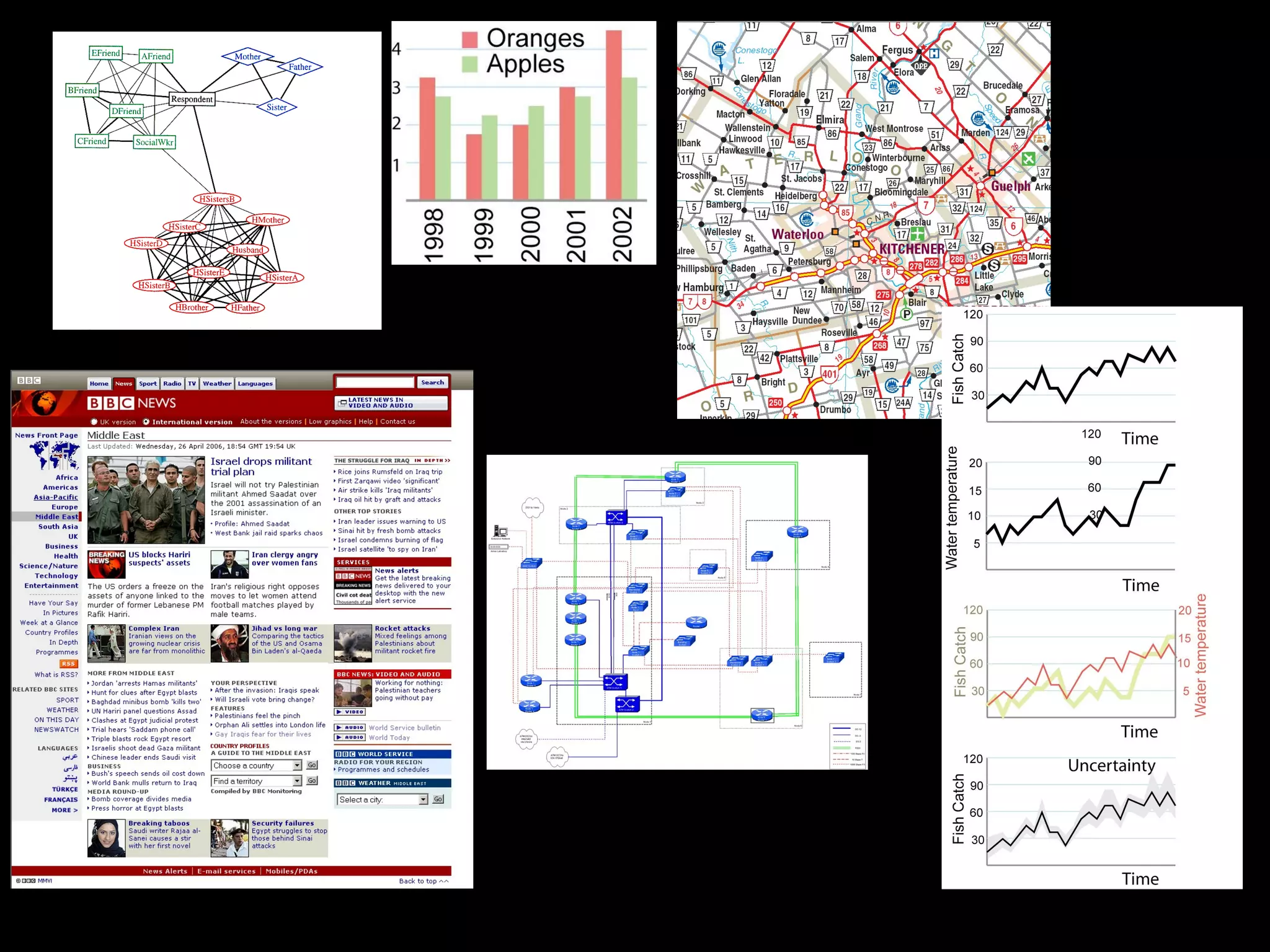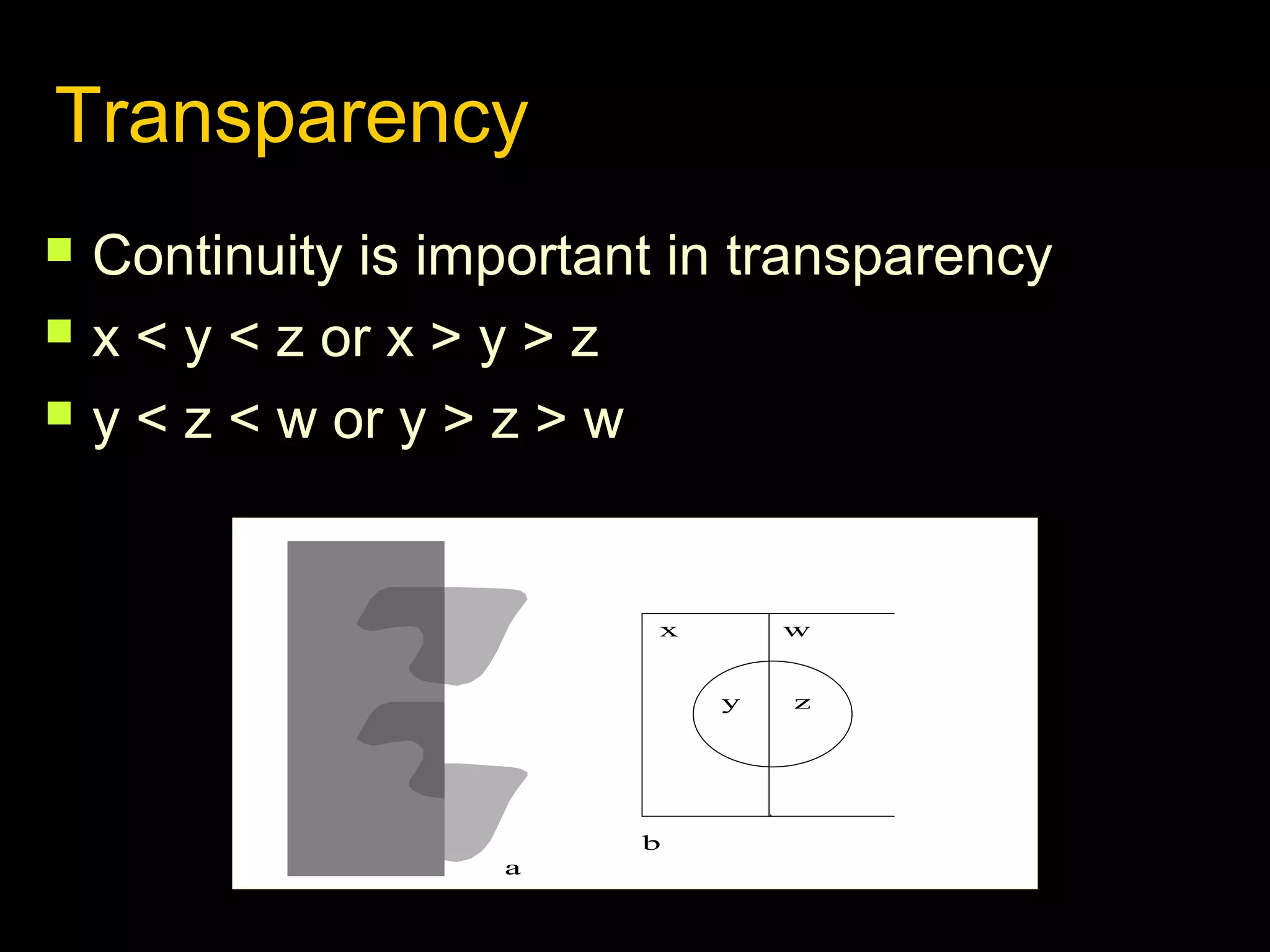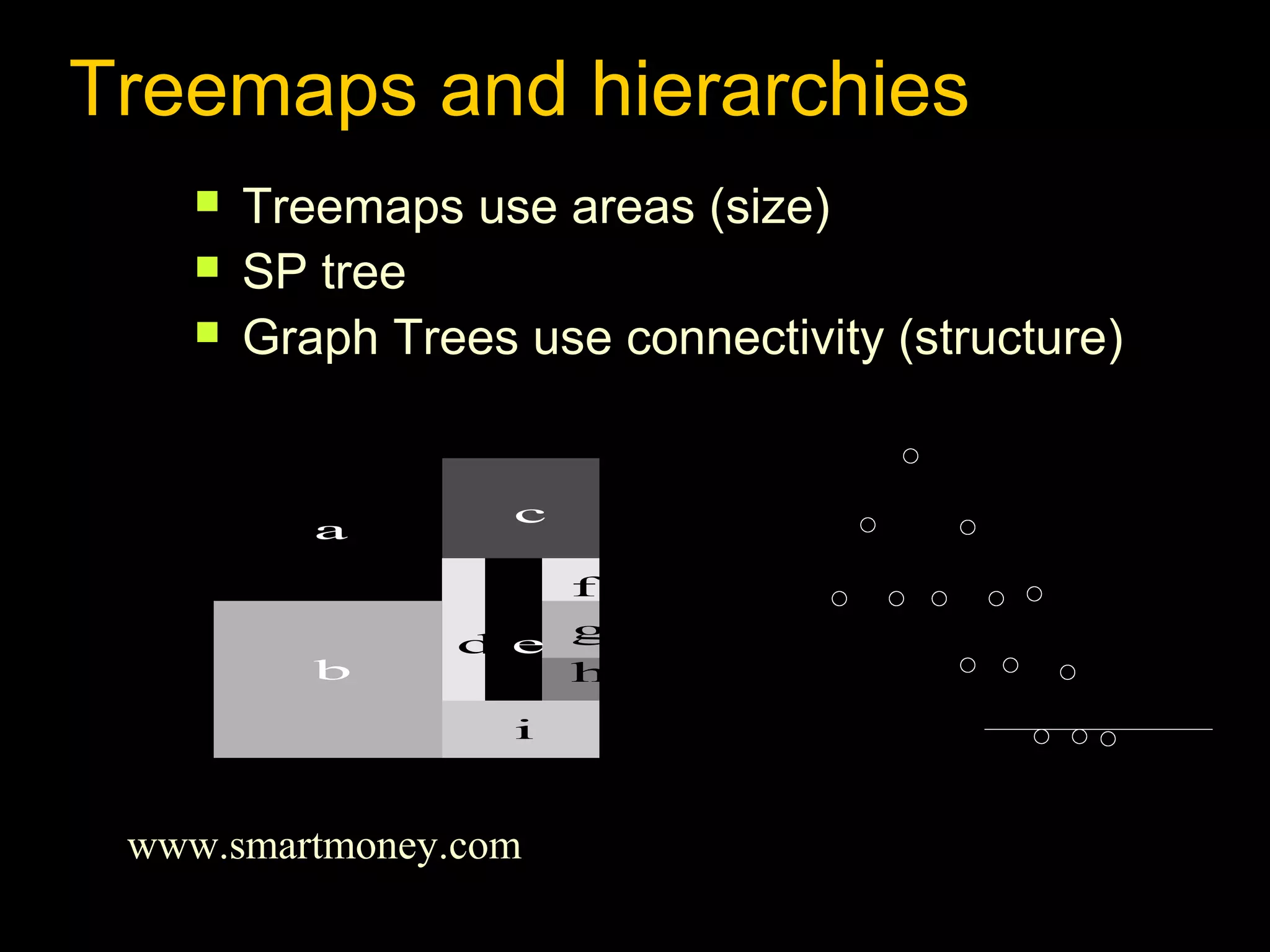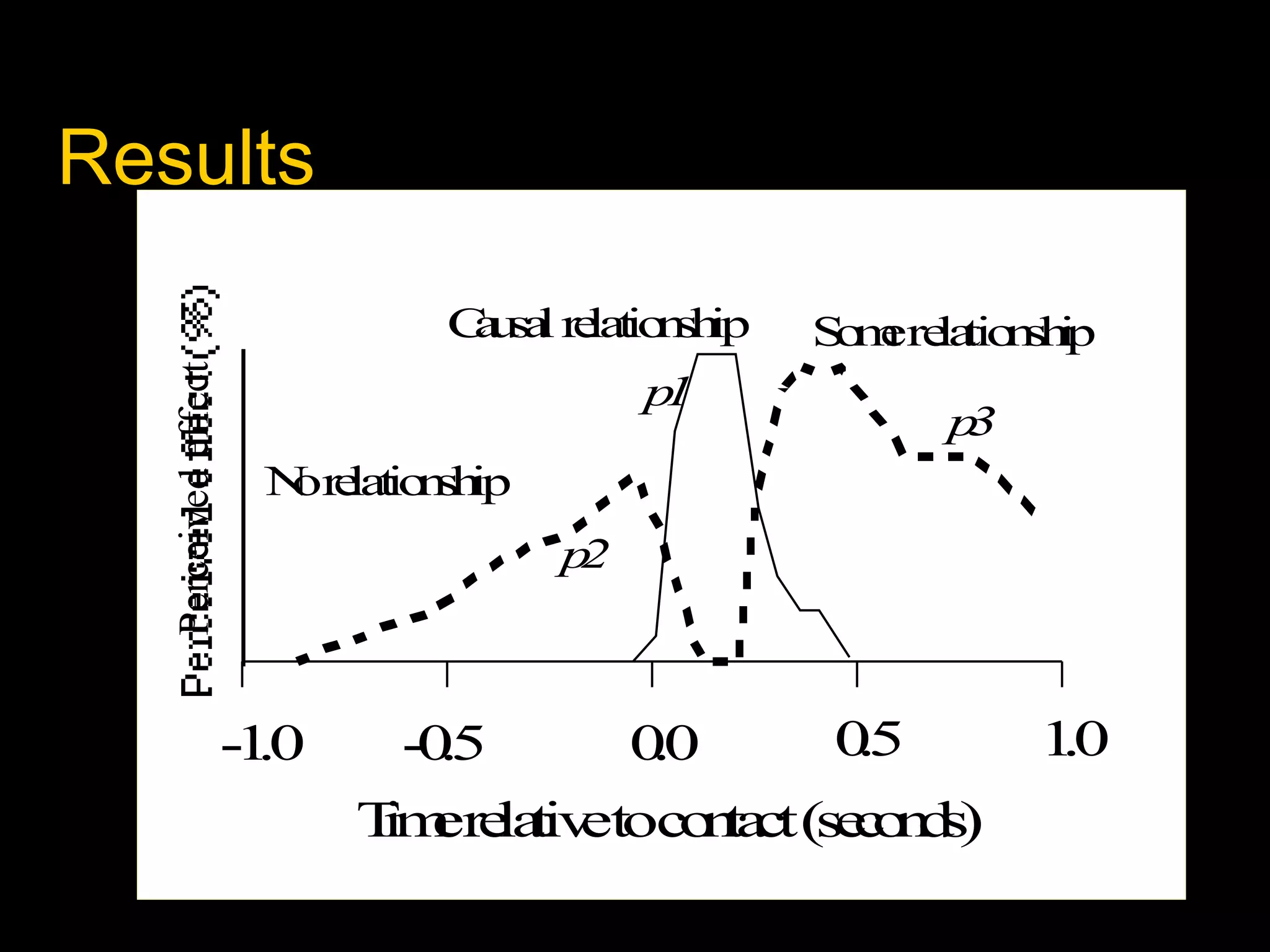Representing Data using Static and Moving Patterns discusses using patterns to represent information visually. It covers static patterns based on Gestalt laws of proximity, similarity, continuity, symmetry, closure, relative size, and figure/ground relationships. It also discusses using motion patterns to show relationships by having objects move together or in sequence. The document examines how motion can be used to represent causality, structure, or other relationships between elements. It argues that static and moving patterns are key to effectively visualizing information.






![Part I: Static Patterns
Gestalt Laws
[Max Westheimer, Kurt Koffka, and Wolfgang
Kohler (1912)]
Proximity
Similarity
Continuity
Symmetry
Closure
Relative Size
Figure and Ground](https://crownmelresort.com/image.slidesharecdn.com/visualthinkingcolinwarelectures201316patternsforvisualizatingstructures-131223111314-phpapp02/75/Visual-thinking-colin_ware_lectures_2013_16_patterns-for-visualizating-structures-7-2048.jpg)














































